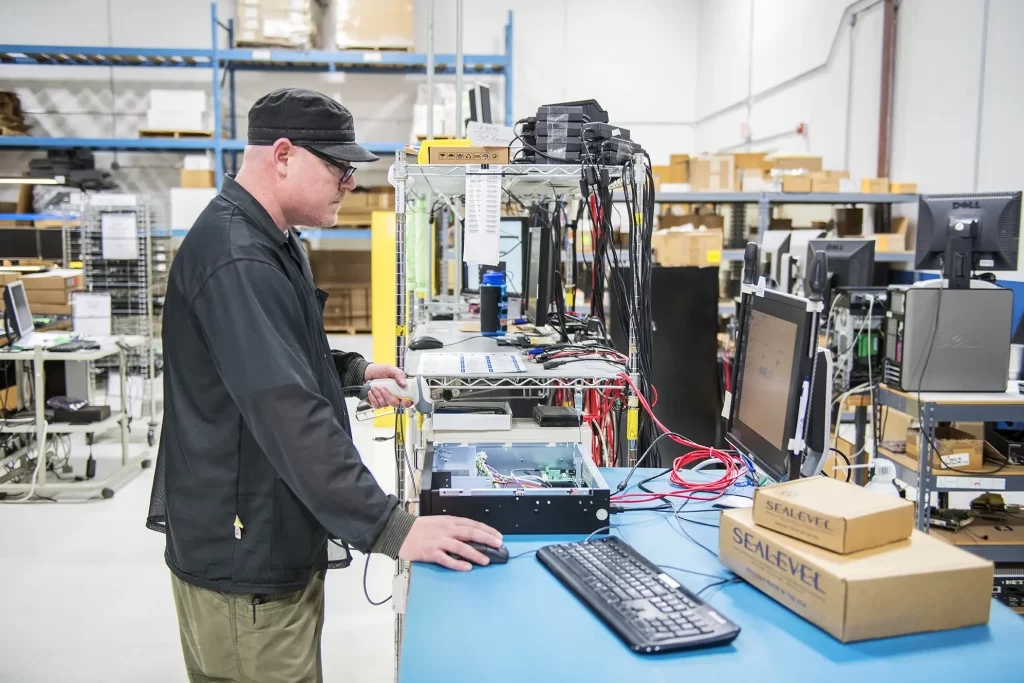HazLoc Certifications & Compliance: Part I

Compliance with hazardous location regulations and standards is necessary to prevent serious accidents in environments including oil rigs, health care facilities and power generation plants. These standards and certifications are enforced by two main groups, ATEX and IEC. ATEX (the ATEX Directive) is a set of EU regulations that is designed to ensure the safety of products being used in hazardous locations. The IEC (International Electrotechnical Commission) is a global organization that sets international standards for all electrical, electronic and related equipment.
ATEX Certification
The basic principle of the ATEX certification is that any equipment used in potentially explosive atmospheres must not form a source of ignition or pose a health and safety threat to employees or property. The certification requires product designs to match the standards set in the Directives for Equipment (ATEX 114) and Health and Safety (ATEX 153).
There are two steps to achieve ATEX certification:
- Technical evaluation – The design and technical details of the product are assessed, recorded and held by a Notified Body (NBEx). A sample of the product is then tested for compliance.
- Quality assessment – The locations where the product is manufactured are audited to ensure identical design and performance to the tested sample. The ATEX Quality Assurance Notification (QAN) process then continually monitors systems related to the product.
A successful evaluation and QAN report result in an official ATEX Certification of Conformity being issued by a Notified Body.
IECEx Certification
The IECEx International Certification System is a voluntary certification program. Different countries have varying standards for hazardous location equipment, meaning that equipment must be retested and re-certified often which creates additional costs. Being IECEx certified decreases the need for retesting, simultaneously cutting costs and reducing time to market.
The IECEx International Certification System is compromised of the following:
- The IECEx Certified Equipment Scheme is a way to test and certify equipment used in hazardous locations against fires or explosions from flammable gases or dust.
- The IECEx Certified Facilities Scheme offers testing and certification of service providers for equipment repair, inspection and maintenance, and other safety related activities.
- The IECEx Certified Personnel Scheme evaluates and certifies the competencies of individuals working in hazardous locations.
- The IECEx Conformity Mark Licensing System contains organizations who have successfully completed the IECEx assessment process and are licensed to use the IECEx Conformity Mark, referred to as “The Mark”.
Technology providers for industrial environments intentionally design solutions with these regulations in mind. Sealevel’s engineering team includes dedicated professionals to navigate the necessary testing, compliance and certification.
Design for Certification
With a “design for certification” approach, Sealevel can manage the entire process of custom product development certified to many military and commercial standards including:

- Class I, Div1; Class I, Div 2 Hazardous Areas
- MIL-STD-810 (Environmental)
- MIL-STD-1472 (Heat Transfer)
- MIL-STD-901 (Shock – Marine)
- MIL-STD-464 (EMC)
- MIL-STD-461 (Power Supply Specification)
- MIL-STD-167 (Vibration – Marine)
- NEMA, IP and ATEX
- FCC, CE
- UL, CSA
To learn more, check out our series on “Meeting & Exceeding Standards”:
Aerodynamic Hazards
Pyroshock, Gunfire and Ballistics
Shock and Vibration
Atmospheric Conditions
Environmental Contaminants
Water Intrusion
Temperature Extremes & Shock
Electromagnetic Interference
Categories:
